 |
 |
 |
| |
Pharmacokinetics and dose selection of etravirine in
HIV-infected children between 6 and 17 years, inclusive
|
| |
| |
Reported by Jules Levin
CROI Feb 8-12 2009, Montreal, Canada
Christoph Konigs,1 Cornelia Feiterna-Sperling,2 Susanna Esposito,3 Carlo Giaquinto,4 Thomas N Kakuda,5 Rekha Sinha,6 Rebecca Mack,5 Katrien Janssen,6 Richard MW Hoetelmans6
1Johann Wolfgang Goethe-University Hospital, Frankfurt am Main, Germany; 2Charite, University Medicine Berlin, Berlin, Germany; 3University of Milan, Milan, Italy; 4University of Padua, Padua, Italy;
5Tibotec Inc., Yardley, PA, USA; 6Tibotec BVBA, Mechelen, Belgium
AUTHOR CONCLUSIONS
ETR administered at 4mg/kg and 5.2mg/kg bid following a meal provides comparable exposure in HIV-infected children (aged 6-17 years, inclusive) to 200mg bid in HIV-infected adults
ETR was generally safe and well tolerated
-- two subjects developed a transient rash of mild-to-moderate severity during Stage 1: no apparent association of rash with ETR exposure (AUC12h)
Given the general concern for underdosing of antiretrovirals in children7-9 and lack of any safety signal during Stage II, the selected target dose of ETR in children aged 6-17 years inclusive, is 5.2mg/kg bid
A Phase II trial (TMC125-C213; PIANO) to further determine pharmacokinetics, safety and efficacy over 48 weeks in treatment-experienced children is ongoing
ABSTRACT
Background
Etravirine (ETR; TMC125) is a NNRTI approved in combination with other antiretrovirals for the treatment of HIV-infected, treatment-experienced adults. Pediatric dosing of ETR has not been established. The primary objective of this Phase I, open-label trial was to determine the weight-based dose of ETR that will achieve exposures in treatment-experienced children comparable to those in adults.
Methods
HIV-1-infected children between 6 and
Results
Twenty-one children were enrolled into each stage (seven children participated in both stages); pharmacokinetics were available in 19 and 20 children in Stages I and II, respectively. The mean (standard deviation [SD]) maximum plasma concentration (Cmax) in Stage I and II, respectively, was 495ng/mL (453ng/mL) and 757ng/mL (680ng/mL); minimum plasma concentration (Cmin) was 184ng/mL (151ng/mL) and 294ng/mL (278ng/mL); and area under the plasma concentration-time curve from time of administration to 12 hours after dosing (AUC12h) was 4050ng去/mL (3602ng去/mL) and 6141ng去/mL (5586ng去/mL). PK parameters in Stage II were more comparable to adults participating in the Phase III DUET-1 and DUET-2 trials (mean [SD] population derived Cmin was 393ng/mL [391ng/mL] and AUC12h was 5506ng去/mL [4710ng去/mL], n=575). All children remained <50 copies/mL on Day 8. No serious adverse events (AEs) occurred during ETR treatment; 14 and nine children in Stage I and II, respectively, reported at least one AE, mostly grade 1 or 2. Two children in Stage I developed a mild (grade 1) or moderate (grade 2) rash; no rash was reported in Stage II.
Conclusions
The proposed dose of ETR in children 6-17 years, inclusive is 5.2mg/kg bid. This dose provides comparable exposure to the adult dose of ETR (200mg bid) and was generally safe and well tolerated. Further PK, safety and tolerability of ETR in this population will be investigated in the Phase II PIANO (Pediatric trial with INTELENCE as an Active NNRTI Option) trial.
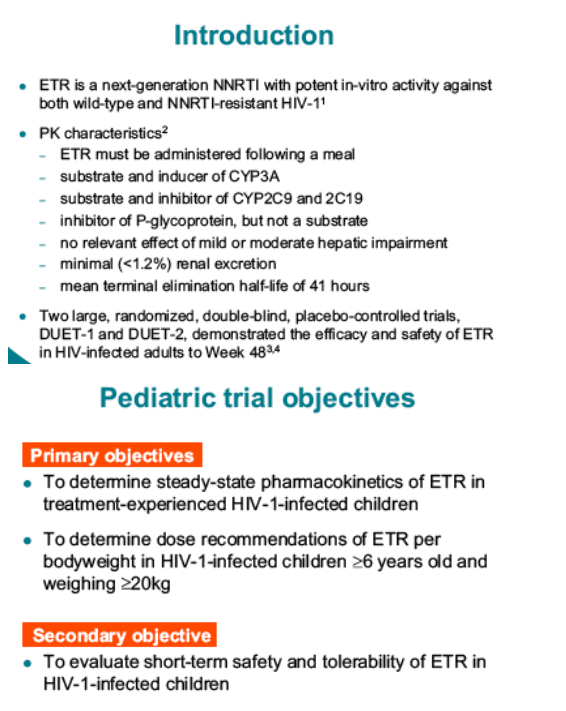
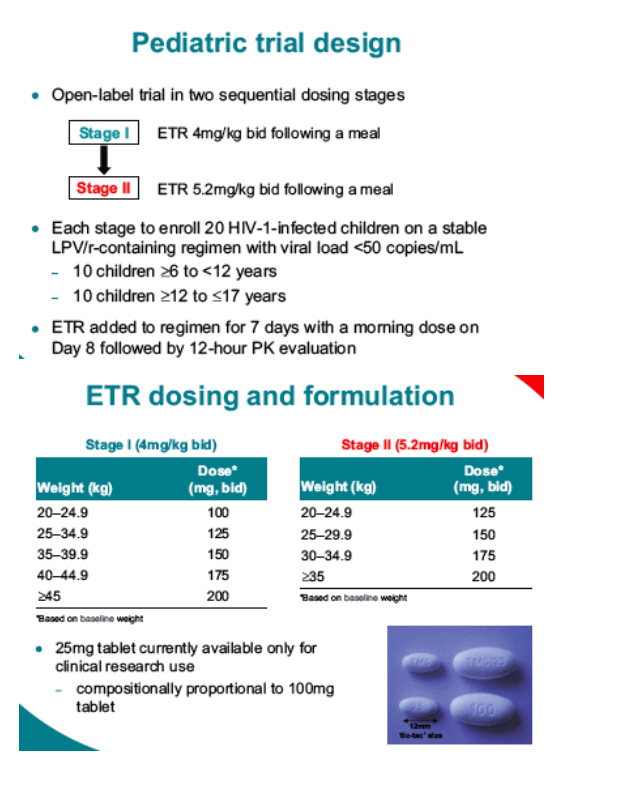
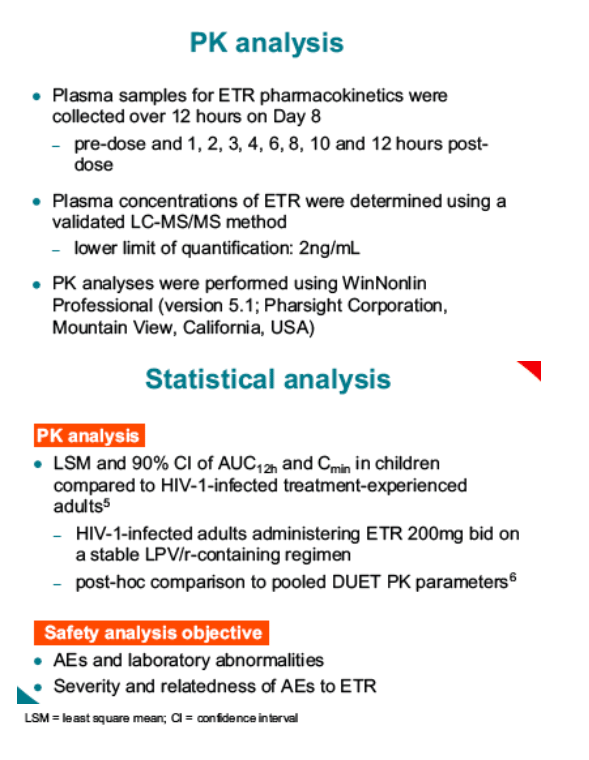
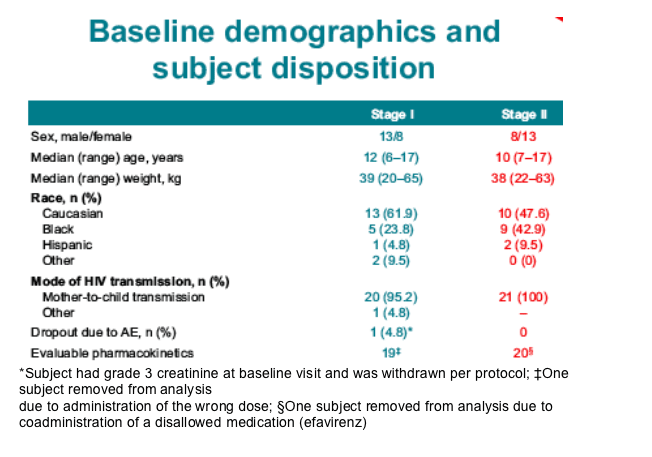
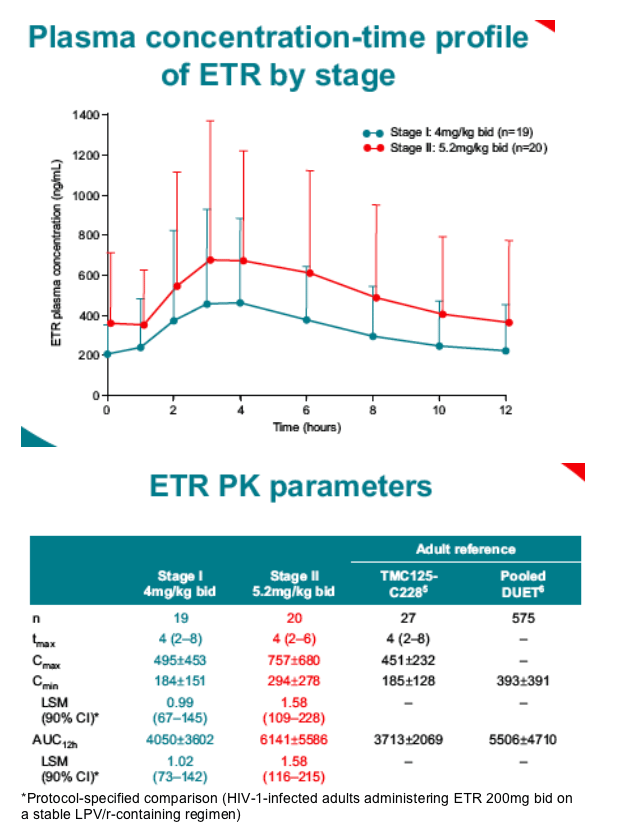
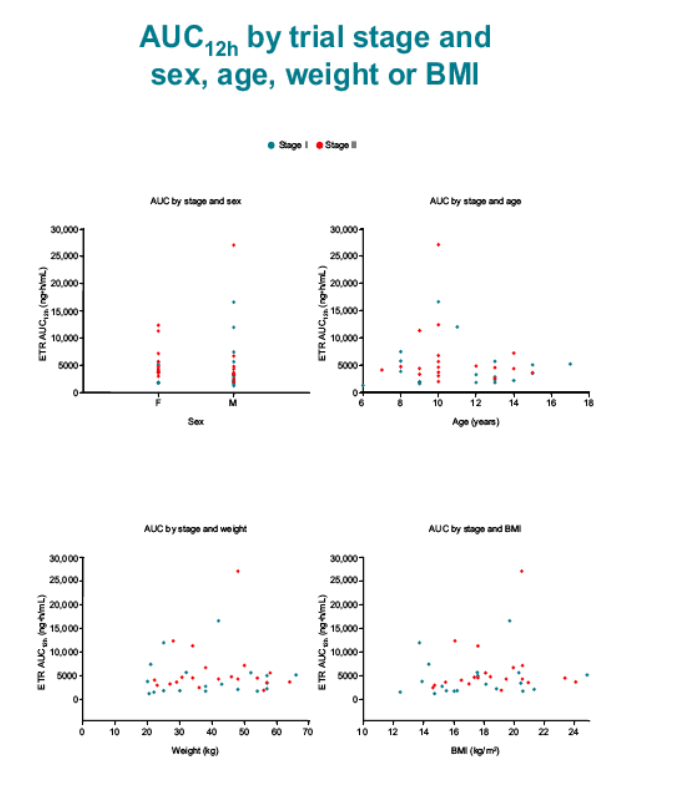
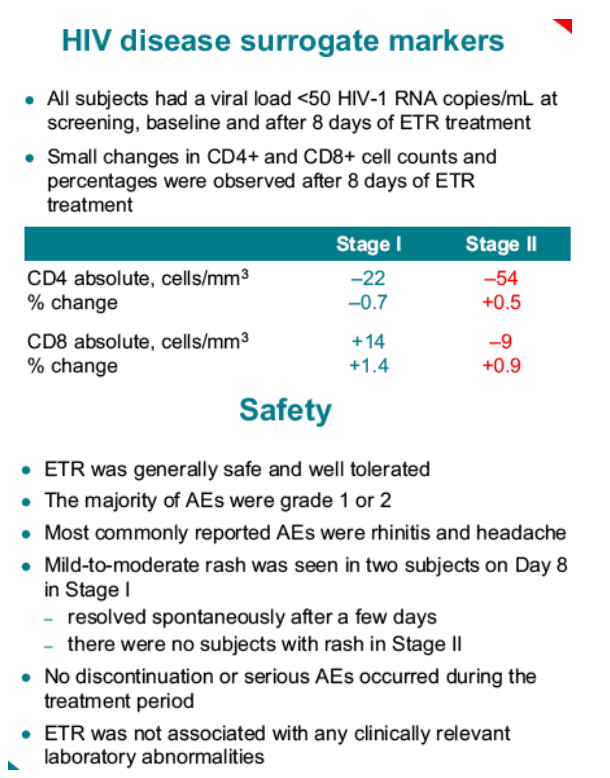
REFERENCES
1. Vingerhoets J, et al. J Virol 2005;79:12773-82.
2. Scholler-Gyure M, et al. Clin Pharmacokinet. Accepted.
3. Haubrich R, et al. CROI 2008. Abstract 790.
4. Johnson M, et al. CROI 2008. Abstract 791.
5. Kakuda TN, et al. Antivir Ther 2008;13:655-61.
6. Kakuda TN, et al. ICAAC/IDSA 2008. Abstract H-4056.
7. Menson EN, et al. Br Med J 2006;332:1183-7.
8. Verweel G, et al. Antivir Ther 2007;12:453-8.
9. ter Heine R, et al. Antivir Ther 2008;13:779-87.
|
| |
|
 |
 |
|
|